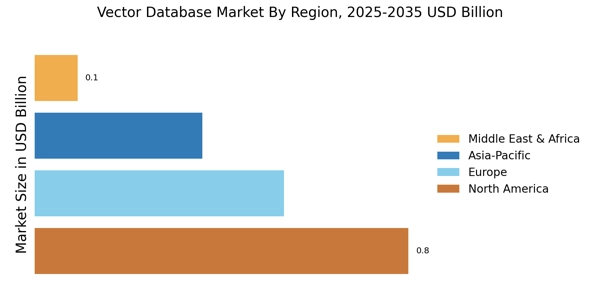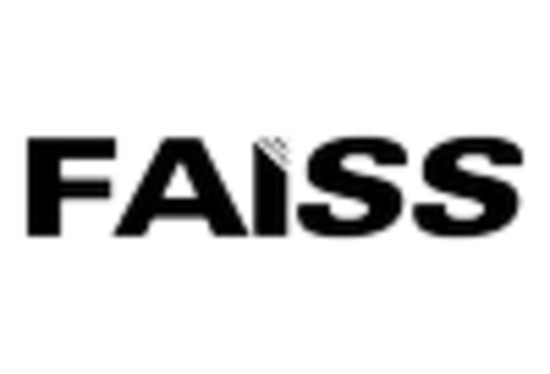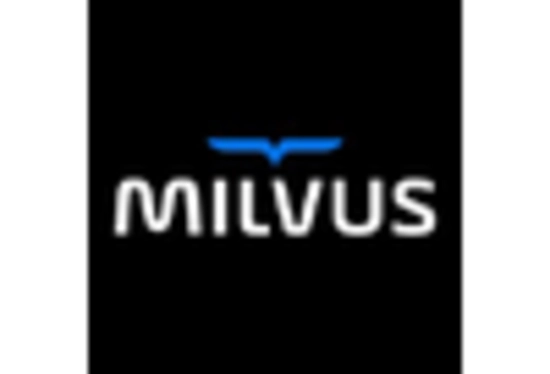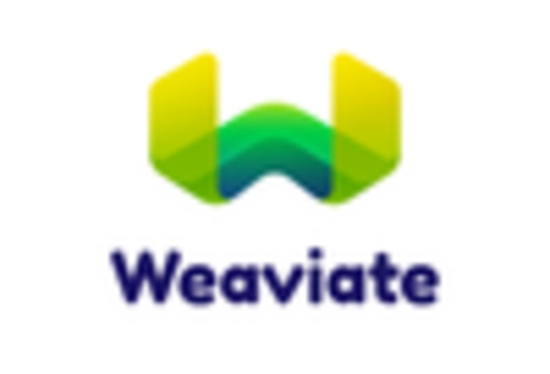Emergence of Edge Computing Solutions
The Vector Database Market is being shaped by the emergence of edge computing solutions, which facilitate data processing closer to the source of data generation. This paradigm shift is particularly relevant in industries such as IoT and telecommunications, where low latency and real-time processing are critical. Vector databases are well-suited for edge computing environments, as they can efficiently handle high-dimensional data and support rapid query responses. The edge computing market is projected to experience substantial growth, with investments in infrastructure and technology expected to rise significantly. As organizations seek to optimize their data processing capabilities at the edge, the adoption of vector databases is likely to increase, thereby contributing to the overall expansion of the vector database market.
Advancements in Natural Language Processing
The Vector Database Market is significantly impacted by advancements in natural language processing (NLP) technologies. As organizations increasingly seek to analyze and interpret human language data, the demand for vector databases that support NLP applications is on the rise. These databases enable efficient storage and retrieval of high-dimensional data, which is essential for training machine learning models in NLP. The market for NLP solutions is projected to reach several billion dollars in the next few years, indicating a robust growth trajectory. As businesses aim to improve customer interactions and automate processes through NLP, the integration of vector databases into their data architecture is likely to become a strategic priority, thereby propelling the growth of the vector database market.
Rising Demand for Real-Time Data Processing
The Vector Database Market is experiencing a notable surge in demand for real-time data processing capabilities. Organizations are increasingly recognizing the necessity of processing vast amounts of data instantaneously to derive actionable insights. This trend is particularly evident in sectors such as finance and e-commerce, where timely decision-making is critical. According to recent estimates, the market for real-time data processing solutions is projected to grow at a compound annual growth rate (CAGR) of over 25% in the coming years. As businesses strive to enhance their operational efficiency, the adoption of vector databases, which excel in handling high-velocity data streams, is likely to become more prevalent. This shift not only enhances data accessibility but also empowers organizations to leverage advanced analytics and machine learning algorithms effectively.
Increased Focus on Data Security and Compliance
The Vector Database Market is witnessing an increased focus on data security and compliance, driven by stringent regulations and the growing threat of cyberattacks. Organizations are compelled to adopt robust data management solutions that not only ensure data integrity but also comply with various regulatory frameworks. Vector databases, with their advanced security features and capabilities for managing sensitive information, are becoming essential tools for businesses aiming to safeguard their data assets. Recent reports suggest that The Vector Database Market is expected to grow significantly, with organizations allocating substantial budgets to enhance their security posture. This trend is likely to drive the adoption of vector databases, as they provide the necessary infrastructure to support secure data operations while maintaining compliance with industry standards.
Growing Importance of Unstructured Data Management
The Vector Database Market is increasingly influenced by the growing importance of unstructured data management. As organizations generate and collect vast amounts of unstructured data, such as text, images, and videos, the need for efficient storage and retrieval solutions becomes paramount. Vector databases are uniquely positioned to address this challenge, as they facilitate the organization and analysis of unstructured data through advanced indexing techniques. Recent studies indicate that unstructured data accounts for approximately 80% of all data generated, underscoring the necessity for robust management solutions. Consequently, businesses are likely to invest in vector databases to harness the potential of unstructured data, thereby driving innovation and enhancing competitive advantage in their respective markets.


















Leave a Comment